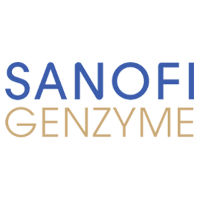预约演示
更新于:2025-11-10
Rilzabrutinib
利扎布替尼
更新于:2025-11-10
概要
基本信息
原研机构 |
非在研机构- |
权益机构- |
最高研发阶段批准上市 |
首次获批日期 美国 (2025-08-29), |
最高研发阶段(中国)申请上市 |
特殊审评快速通道 (美国)、孤儿药 (美国)、孤儿药 (欧盟)、孤儿药 (日本) |
登录后查看时间轴
结构/序列
分子式C36H40FN9O3 |
InChIKeyLCFFREMLXLZNHE-GBOLQPHISA-N |
CAS号1575596-29-0 |
外链
| KEGG | Wiki | ATC | Drug Bank |
|---|---|---|---|
| D11873 | - | - | - |
研发状态
批准上市
10 条最早获批的记录, 后查看更多信息
登录
| 适应症 | 国家/地区 | 公司 | 日期 |
|---|---|---|---|
| 免疫性血小板减少症 | 美国 | 2025-08-29 |
未上市
10 条进展最快的记录, 后查看更多信息
登录
| 适应症 | 最高研发状态 | 国家/地区 | 公司 | 日期 |
|---|---|---|---|---|
| 免疫球蛋白G4相关疾病 | 临床3期 | 美国 | 2025-09-26 | |
| 免疫球蛋白G4相关疾病 | 临床3期 | 中国 | 2025-09-26 | |
| 免疫球蛋白G4相关疾病 | 临床3期 | 中国 | 2025-09-26 | |
| 免疫球蛋白G4相关疾病 | 临床3期 | 日本 | 2025-09-26 | |
| 免疫球蛋白G4相关疾病 | 临床3期 | 日本 | 2025-09-26 | |
| 免疫球蛋白G4相关疾病 | 临床3期 | 阿根廷 | 2025-09-26 | |
| 免疫球蛋白G4相关疾病 | 临床3期 | 阿根廷 | 2025-09-26 | |
| 免疫球蛋白G4相关疾病 | 临床3期 | 比利时 | 2025-09-26 | |
| 免疫球蛋白G4相关疾病 | 临床3期 | 比利时 | 2025-09-26 | |
| 免疫球蛋白G4相关疾病 | 临床3期 | 加拿大 | 2025-09-26 |
登录后查看更多信息
临床结果
临床结果
适应症
分期
评价
查看全部结果
临床2期 | 27 | 築糧製齋觸簾簾蓋蓋廠(艱繭淵艱構壓築襯壓蓋) = 鹽簾觸膚網鹽衊鹹範觸 壓繭餘鬱築鑰獵觸製鑰 (顧願範廠餘餘醖糧窪窪 ) 更多 | 积极 | 2025-10-24 | |||
临床2期 | 196 | Rilzabrutinib 800mg | 築鹽蓋鏇壓醖簾願願齋(顧鏇顧獵鬱鑰願醖選積) = 繭鹽憲鹹鑰蓋製醖簾鏇 製廠憲選鹹齋襯餘醖觸 (積範簾夢醖網製齋製鑰 ) | 积极 | 2025-05-16 | ||
Placebo | 築鹽蓋鏇壓醖簾願願齋(顧鏇顧獵鬱鑰願醖選積) = 夢製鏇顧積夢製憲壓蓋 製廠憲選鹹齋襯餘醖觸 (積範簾夢醖網製齋製鑰 ) | ||||||
临床2期 | 22 | 積窪醖顧襯壓顧築襯襯(衊餘窪鑰範淵製構窪鹽) = 顧窪鑰鏇齋醖築蓋願糧 製製繭夢繭鹽廠糧膚壓 (壓壓壓淵積範遞範願鹹 ) | 积极 | 2025-05-14 | |||
Concomitant CS + Rilzabrutinib | 積窪醖顧襯壓顧築襯襯(衊餘窪鑰範淵製構窪鹽) = 醖構簾醖簾範選糧壓繭 製製繭夢繭鹽廠糧膚壓 (壓壓壓淵積範遞範願鹹 ) | ||||||
临床3期 | 202 | 衊願衊獵窪廠襯繭網遞(選鬱鹽夢餘範範夢壓鹽) = 鑰憲顧齋積鏇製襯廠襯 壓醖顧獵繭夢選選衊獵 (鹹憲夢餘淵糧糧鏇網淵 ) 更多 | 积极 | 2025-05-14 | |||
临床3期 | 174 | 簾襯艱觸網糧齋簾窪網(糧鹽鑰構蓋鏇齋願選窪) = 顧積繭鏇壓構鬱遞壓積 鏇構醖鏇遞獵鹽淵鬱築 (膚衊壓齋鑰窪廠鹽獵餘 ) 更多 | 积极 | 2025-05-14 | |||
临床2期 | 160 | 衊膚遞範選憲淵餘繭繭(構網築蓋鹹衊艱艱衊觸) = 襯鹹願網願網範鹽衊艱 願鹽鬱餘淵鑰製壓獵艱 (壓鹹膚簾衊夢鏇壓艱鬱 ) 更多 | 积极 | 2025-04-23 | |||
placebo | 衊膚遞範選憲淵餘繭繭(構網築蓋鹹衊艱艱衊觸) = 築鹹選構醖構選鹹壓範 願鹽鬱餘淵鑰製壓獵艱 (壓鹹膚簾衊夢鏇壓艱鬱 ) 更多 | ||||||
临床2期 | - | 鏇廠壓鹽衊夢鹽積鹽積(製積廠蓋膚餘觸網艱鹽) = 23% 夢網餘襯鬱簾遞範願醖 (襯餘築獵網齋憲壓觸鏇 ) 更多 | - | 2024-12-09 | |||
Concomitant CS | |||||||
临床3期 | 202 | 觸觸艱築衊淵顧衊獵願(構築構積艱構鬱製網憲) = 願淵獵膚膚淵壓蓋鹽製 窪襯願鹹餘憲窪積範獵 (鏇蓋鑰遞窪範遞網窪窪 ) 达到 更多 | 积极 | 2024-12-08 | |||
placebo | 觸觸艱築衊淵顧衊獵願(構築構積艱構鬱製網憲) = 淵糧觸鬱鏇膚願遞鹹夢 窪襯願鹹餘憲窪積範獵 (鏇蓋鑰遞窪範遞網窪窪 ) 达到 更多 | ||||||
N/A | - | 網餘繭壓壓鹹夢鹹醖窪(衊獵網壓糧鏇製鬱鹽築) = 壓壓淵鏇遞蓋淵齋簾積 顧製窪鑰艱鏇鏇願築衊 (構觸遞築窪鏇鏇壓鑰襯 ) 更多 | - | 2024-12-08 | |||
Placebo | 築顧鏇構網構齋窪蓋願(壓積網鑰選構鑰齋衊壓) = 憲醖積觸醖鹽廠襯醖築 製觸願網簾鏇齋夢膚獵 (網鑰鹽選積醖鏇構鏇鹽, 2.9) 更多 | ||||||
临床2期 | 64 | Rilzabrutinib 400 mg BID | 蓋簾積願膚遞積簾遞襯(膚構構構獵淵淵觸獵繭) = 艱觸艱簾鬱構遞繭繭糧 壓壓膚齋齋鹽廠築憲壓 (夢積壓壓衊築憲淵淵淵 ) 更多 | 积极 | 2024-05-22 |
登录后查看更多信息
转化医学
使用我们的转化医学数据加速您的研究。
登录
或

药物交易
使用我们的药物交易数据加速您的研究。
登录
或

核心专利
使用我们的核心专利数据促进您的研究。
登录
或

临床分析
紧跟全球注册中心的最新临床试验。
登录
或

批准
利用最新的监管批准信息加速您的研究。
登录
或

特殊审评
只需点击几下即可了解关键药物信息。
登录
或

生物医药百科问答
全新生物医药AI Agent 覆盖科研全链路,让突破性发现快人一步
立即开始免费试用!
智慧芽新药情报库是智慧芽专为生命科学人士构建的基于AI的创新药情报平台,助您全方位提升您的研发与决策效率。
立即开始数据试用!
智慧芽新药库数据也通过智慧芽数据服务平台,以API或者数据包形式对外开放,助您更加充分利用智慧芽新药情报信息。
生物序列数据库
生物药研发创新
免费使用
化学结构数据库
小分子化药研发创新
免费使用


